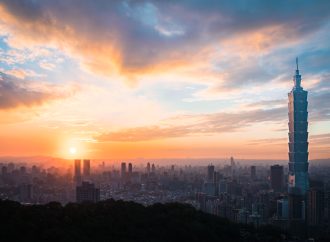Extreme events have the ability to radically change political, moral, technical and other debates that shape what governments say and do. The effect of the 2011 Fukushima disaster on national energy strategies was so far-reaching that it led many to forecast the death of nuclear power. In Europe, for example, the governments of Germany, Italy,
Extreme events have the ability to radically change political, moral, technical and other debates that shape what governments say and do. The effect of the 2011 Fukushima disaster on national energy strategies was so far-reaching that it led many to forecast the death of nuclear power. In Europe, for example, the governments of Germany, Italy, Belgium, and Switzerland were relatively quick to put new nuclear projects on hold, while scaling back on existing capacities. A dramatic shift may be underway even in France, the world’s second biggest user of nuclear power, where the new president François Hollande vowed to reduce the share of atomic energy in the national power supply to 50% from 75% in the coming years. As for Japan, after months and months of deliberations, its government recently made the following statement (doubtless, in anticipation of the December 16 parliamentary election): “One of the key pillars of the new strategy is to achieve a society that does not depend on nuclear energy as soon as possible”
‘For all the upbeat media spin that often surrounds it, the anti-nuclear turn is bad news for the planet.’
As it is often the case, the rumours of the death have been greatly exaggerated. The effect of Fukushima has been rather uneven in the sense that many governments – including democratically elected ones – have stayed the course on nuclear energy. So even if the number of nuclear reactor shutdowns continues to prevail over the number of start-ups for another decade or so, in the longer term (and in absolute terms) there are many bright days ahead for the nuclear industry. The demand is driven by a handful of developing states whose governments are expanding nuclear projects in response to the rapid expansion in energy use. According to the latest World Nuclear Association report, 59 reactors are under construction today (with 200 more planned or proposed); and of those, 26 are in China, 10 in Russia, 7 in India, and 3 in South Korea. (Other sources give slightly different numbers, and the report acknowledges that “[n]one of these countries has historically been very transparent or reliable about information on the status of their construction sites”.)
How has Fukushima impacted Canada? Last week I posed this question to Robert Lojk, Regulatory Program Director at the Canadian Nuclear Safety Commission, who kindly agreed to give a guest lecture in our international affairs seminar. Much like their counterparts elsewhere, government regulators are busy updating technical, operational and regulatory standards for safeguarding existing and future nuclear plants. But ultimately, he said, the nuclear issue is political, and politics is about the allocation of values – which was exactly the kind of response we needed to hear.
And in this spirit, here’s a little bit of politics from me: for all the upbeat media spin that often surrounds it, the anti-nuclear turn is bad news for the planet. Unless renewable energy sources can somehow claim a much larger share of the global energy pie very soon, the proposed nuclear energy phase-outs – if and when implemented – are likely to lead to an increase in the use of fossil fuels, with the predictable overall effect on greenhouse gas emissions and the likelihood of North Pole crocodiles. Nuclear energy has its risks and uncertainties, but they may be lower than those borne out from waiting for a decarbonized economy to materialize in a meaningful way.
Canada’s own nuclear capacity has a rich history that goes back to late 1940s, when an experimental reactor was built at Chalk River, ON (a site that even today hosts a great deal of Canadian nuclear R&D). The investment began to pay off three decades later, when the first generation of commercial power plants based on indigenous CANDU (Canada Deuterium Uranium) technology opened in Ontario and Quebec. Since then, 29 CANDU reactors have been constructed on four continents, not counting the so-called derivative units. While the reactors never sold like hotcakes, Canada’s nuclear portfolio has been strong overall thanks to items like medical radioisotopes and, especially, high grade uranium ore.
Canada currently operates 17 reactors (3 more have been refurbished), which together generate about 15% of the national power supply. For the time being, this capacity is unlikely to expand significantly (either in relative or absolute terms). Quebec’s Gentilly-2 nuclear facility is scheduled to close at the end of the year, and Ontario’s new reactors are on the longer end of the Long-Term Energy Plan. Indeed, even the FAQ page of the Atomic Energy of Canada Limited appears to suggest that the primary significance of the two-unit expansion at Darlington relates to “schedule delays and financial policy changes.”
My second query to Lojk was about Canada’s role in the nuclear technology (material and equipment etc.) export market. Arguably, an arena so deeply intertwined with old-school security issues like arms trade and grand strategies perhaps never was a natural environment for a “regional power with a region”. (David Mutimer’s textbook analysis of Canada’s “nuclear-salesman identity” is particularly instructive in this regard). But now that the market has become a multi-cornered fight, the challenges for the Canadian industry are even greater. Lojk noted that Canada has maintained its leadership in uranium mining and processing but could benefit from additional investment and growth in the nuclear industry.
Indeed, to the extent that the R&D on things like reactor parts or radioactive waste management systems is – or should be – an important part of our nation’s DNA, the government has much work to do. The way I see it, of the 25 recommendations made in the recently released Emerson report on the aerospace industry, more than a few can be applied to the nuclear industry as well. I would underline Recommendation 15, which concerns foreign labour. If we can have a custom-made immigration program for RAF pilots who are coming over to fly our military aircraft, we might as well introduce another for nuclear scientists and engineers from France, Japan, and other countries that may no longer need them.









